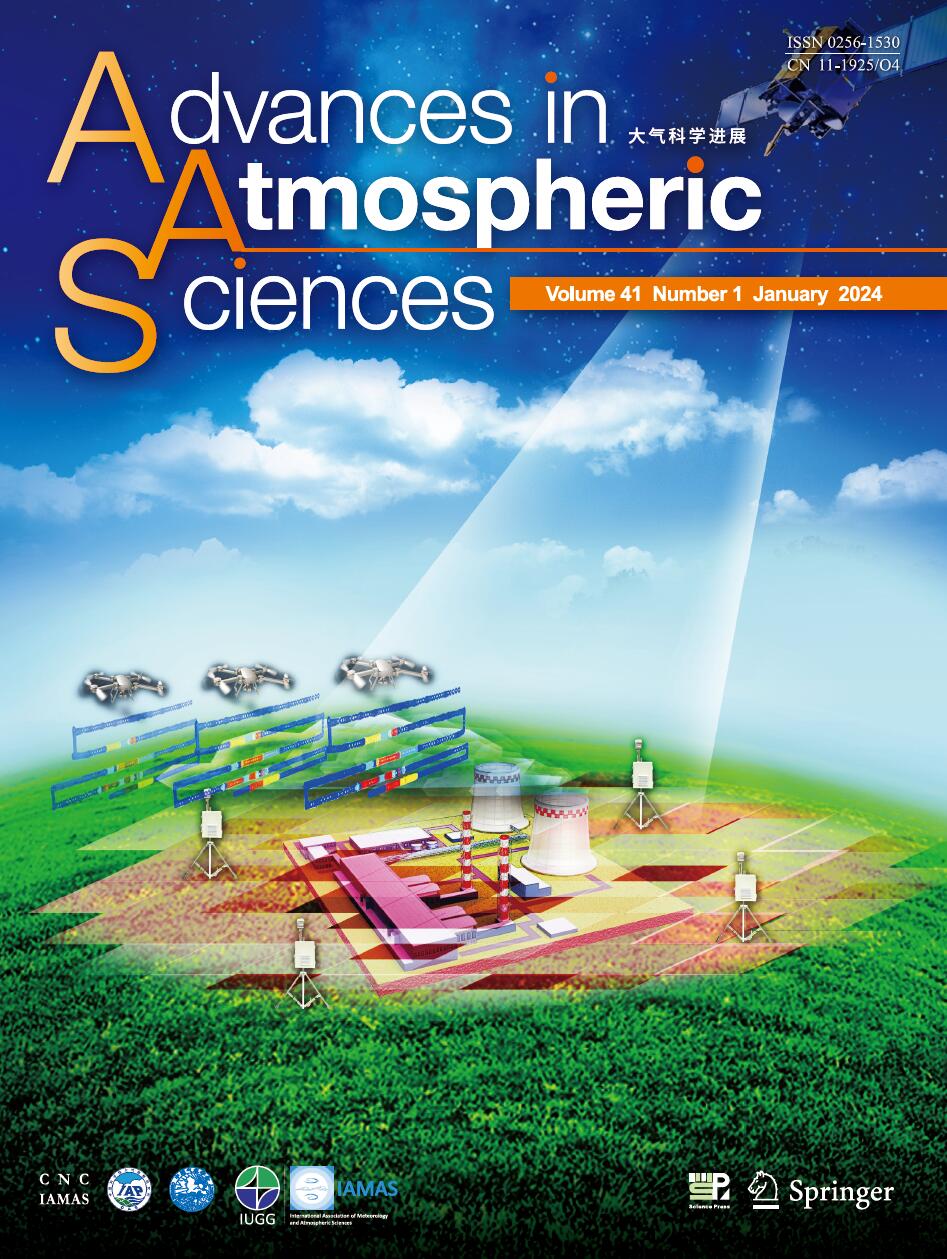-
Water vapor is a critical component of the hydrological cycle because it plays a vital role in transporting water from one part of the cycle to another. Water vapor evaporated from surfaces such as oceans, lakes, and rivers condensates into liquid- or ice-phase hydrometeors, while clouds are formed owing to the atmospheric upward motion. Ultimately, evaporated water vapor returns to the ground as precipitation, providing essential ingredients for the survival of humans and animals, and the global ecosystem. During this hydrological cycle, water vapor experiences energy exchange processes, including latent heat release, the greenhouse effect, and the cloud radiative effect, which are all interconnected and play critical roles in regulating Earth’s climate system and the hydrological cycle. For a comprehensive understanding of the hydrological response to global warming, one can refer to studies such as Held and Soden (2006). Given the fundamental significance of these processes to Earth’s energy balance and their influence on water availability and extreme weather events, it becomes imperative to study and comprehend the energy exchange mechanisms within the hydrological cycle. Such research is vital for predicting and understanding global climate change.
Recognizing that water vapor is the key component in this cycle, observation and monitoring of water vapor become pivotal in climate change studies and prediction. Analyzing long-term water vapor trends through various means is crucial in this regard. Notable works that delve into this topic include Sohn and Park (2010), Sohn et al. (2013), Allan et al. (2022), and Roemer et al. (2023).
Furthermore, understanding water vapor content and its distribution are indispensable for accurate weather forecasting. Monitoring and analyzing water vapor contents allow us to predict rainfall, snowfall, and severe weather events more effectively. Water vapor also has a significant impact on temperature patterns and atmospheric dynamics, making it a crucial component in ensuring precise and timely weather predictions. In particular, our focus lies in comprehending how changes in water vapor in a warmer world can influence weather patterns and contribute to various extreme weather phenomena such as heatwaves, droughts, floods, and the formation of tropical cyclones (Tabari, 2020).
Therefore, measurement and monitoring of water vapor play a vital role not only in climate prediction but also in weather forecasting. Satellite observations are especially valuable in this regard, as they offer global coverage, timely monitoring capabilities, integration into models through data assimilation, and insights into atmospheric processes. Furthermore, satellite-derived water vapor data are instrumental in evaluating forecasting accuracies, identifying deficiencies in numerical models, and guiding model improvements. By utilizing satellite observations, we can significantly enhance the accuracy and reliability of numerical weather prediction models.
With a wealth of information from satellite observations available in this contemporary era, we are now able to explore applications such as assessing model forecasts and understanding model deficiencies. An important contribution in this regard is the recent article by Di et al. (2024) (starting with Page 19 in this issue), which focuses on utilizing satellite-based water vapor information to evaluate reanalysis data. Reanalysis data are widely used in the atmospheric sciences community for studying climate trends, monitoring climate change, and assessing model performance. Therefore, any insights into the uncertainties associated with reanalysis products are valuable in climate change studies.
In their study, Di et al. (2024) took a novel approach by simulating satellite-measured radiances instead of relying on satellite-retrieved water vapor products, which can be subject to deficiencies associated with retrieval algorithms. By comparing simulated Advanced Himawari Imager (AHI) brightness temperatures with actual observations, they assessed water vapor biases in six well-known reanalysis datasets over East Asia. Their findings indicate the presence of moist biases in the upper troposphere across all datasets, particularly during the summer season. However, the middle troposphere exhibits better accuracy in representing water vapor. The proposed methodology and the findings are of great significance, not only for improving atmospheric reanalysis products, but also for maximizing the utility of satellite observations.
Their study serves as a compelling illustration of how satellite observations can be effectively utilized to enhance our understanding in the climate sciences and meteorology. Nevertheless, outstanding problems remain in relation to water vapor observations from satellites that require further attention. These include the need for improved vertical profiling under all sky conditions, understanding the impact of cloud contamination on water vapor retrieval, investigating diurnal variations in water vapor, assessing regional influences such as atmospheric rivers, developing calibration methods to construct long-term water vapor datasets spanning decades from multi-satellite data, and characterizing water vapor data from multiple sensors. Enhancing our understanding of these aspects would undoubtedly contribute to advancements in weather forecasting, climate research, and hydrological studies.
Water Vapor Information from Satellite and Its Applications
Abstract:















 AAS Website
AAS Website 
 AAS WeChat
AAS WeChat 
 DownLoad:
DownLoad: